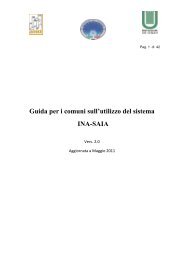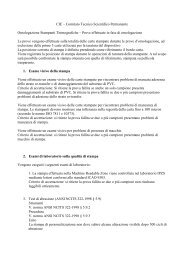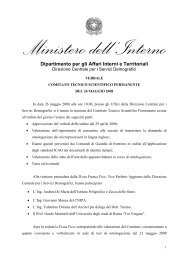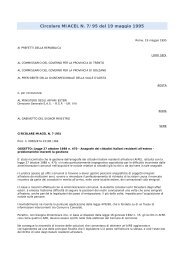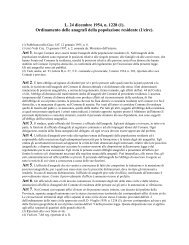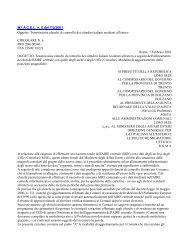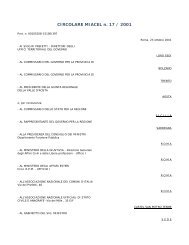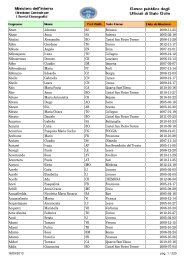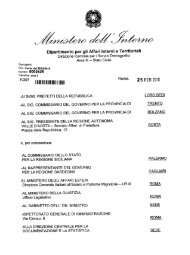C.I.E – Carta di Identità Elettronica Functional Specification Version 2.0
CIE - Functional Specification v 2.0
CIE - Functional Specification v 2.0
- No tags were found...
You also want an ePaper? Increase the reach of your titles
YUMPU automatically turns print PDFs into web optimized ePapers that Google loves.
Byte Nr. SM Con<strong>di</strong>tion1 ENC USE IN2 SIG USE IN3 ENC CHANGE4 SIG CHANGE5 ENC UNBLOCK6 SIG UNBLOCKInvolved CommandPSO_DEC, PSO_ENC, PSO_CDS,VERIFY, EXTERNAL AUTHCHANGE REFERENCE DATA,CHANGE KEY DATARESET RETRY COUNTER7..14 RFU Set to FFh15 ENC USE OUT16 SIG USE OUTPSO_DEC, PSO_ENC, PSO_CDSPSO_DEC, PSO_ENC, PSO_CDSTable 17: BSO SM Con<strong>di</strong>tions co<strong>di</strong>ng11.4.2 APDU command in SM_SIG modeWhen an APDU command is transmitted in SM_SIG mode (CLA = XCh) a MAC (signature) iscomputed on the command header and on the data field. The MAC is added to the command datafield.The final APDU set up can be split in 4 steps:• Step 1: set up the HEADER BLOCKOriginal APDU command structure:CLA INS P1 P2 Lc Data Field LeX0h XX XX XX U Data (U bytes)Header Block Structure:Random Number CLA INS P1 P2 Pad<strong>di</strong>ngCIE - <strong>Functional</strong> <strong>Specification</strong> v <strong>2.0</strong> -Page 35/76





